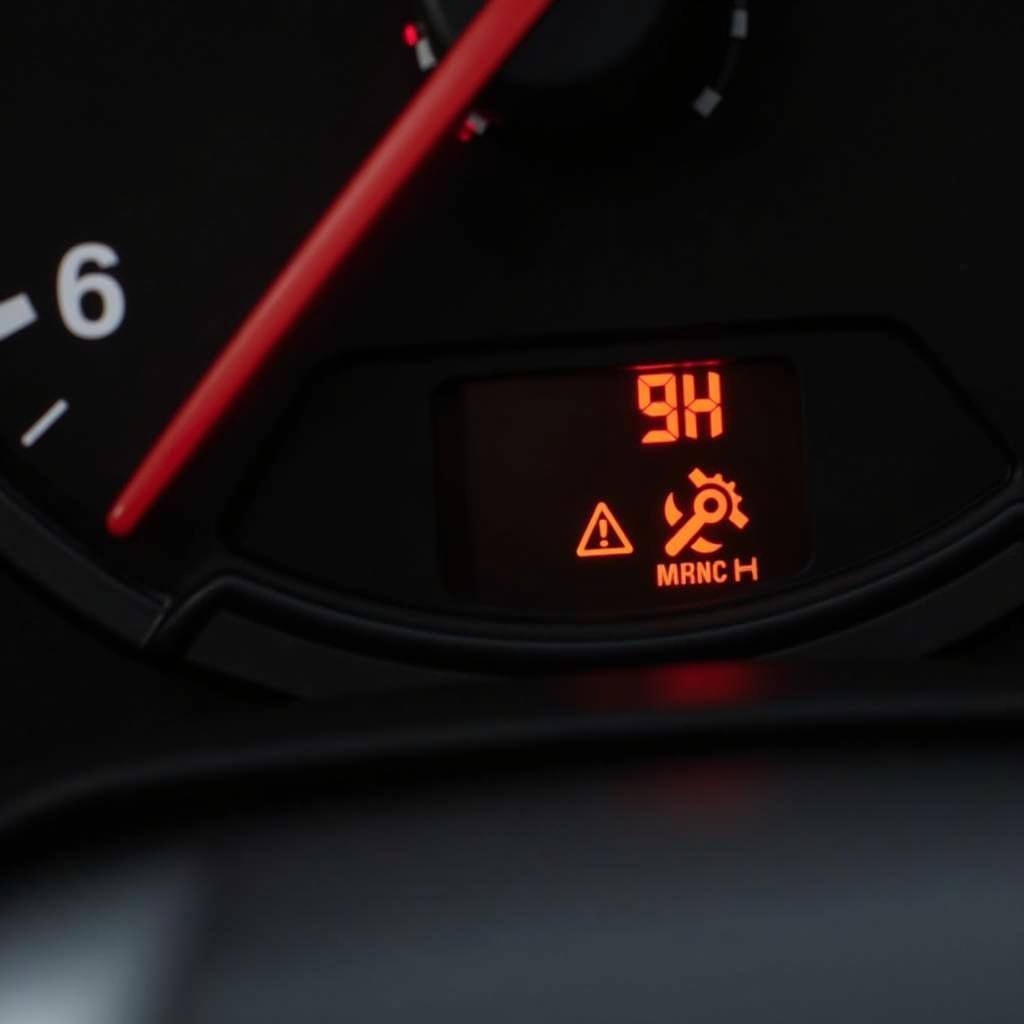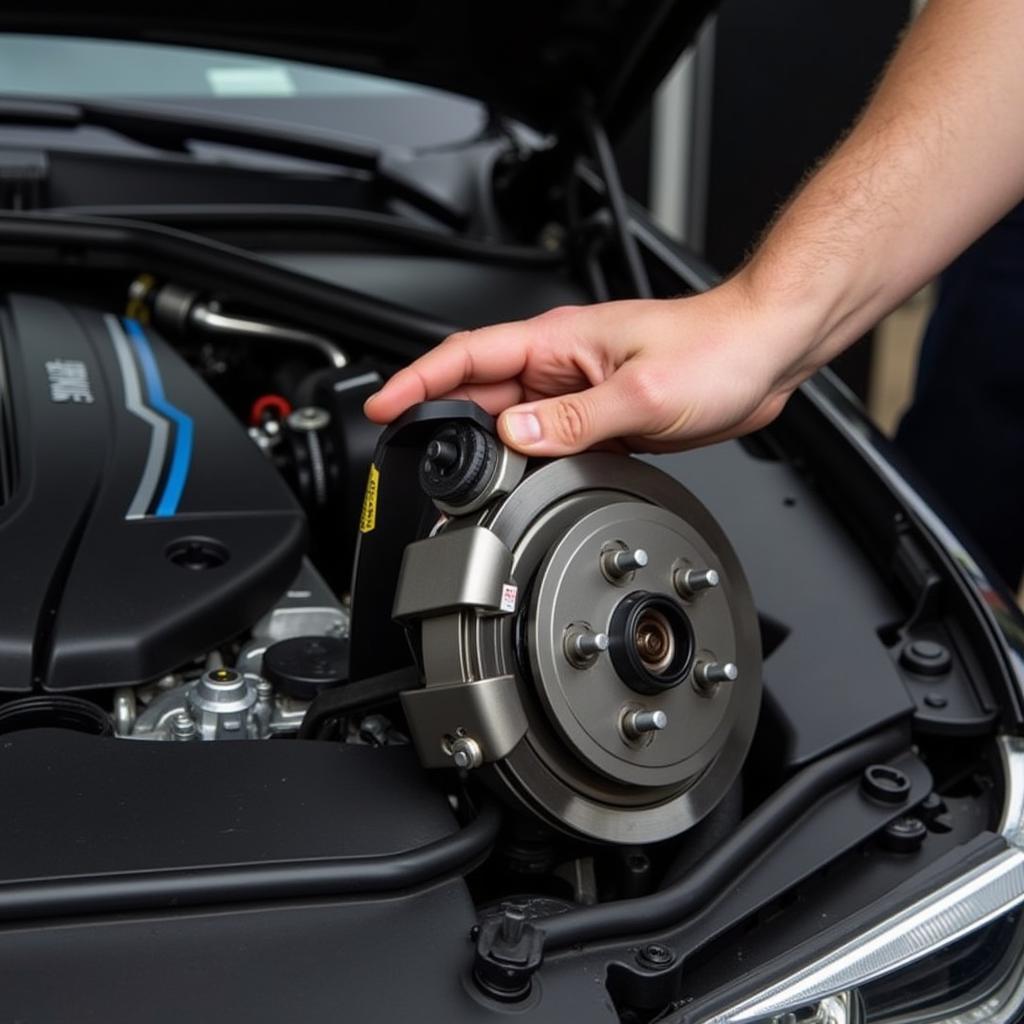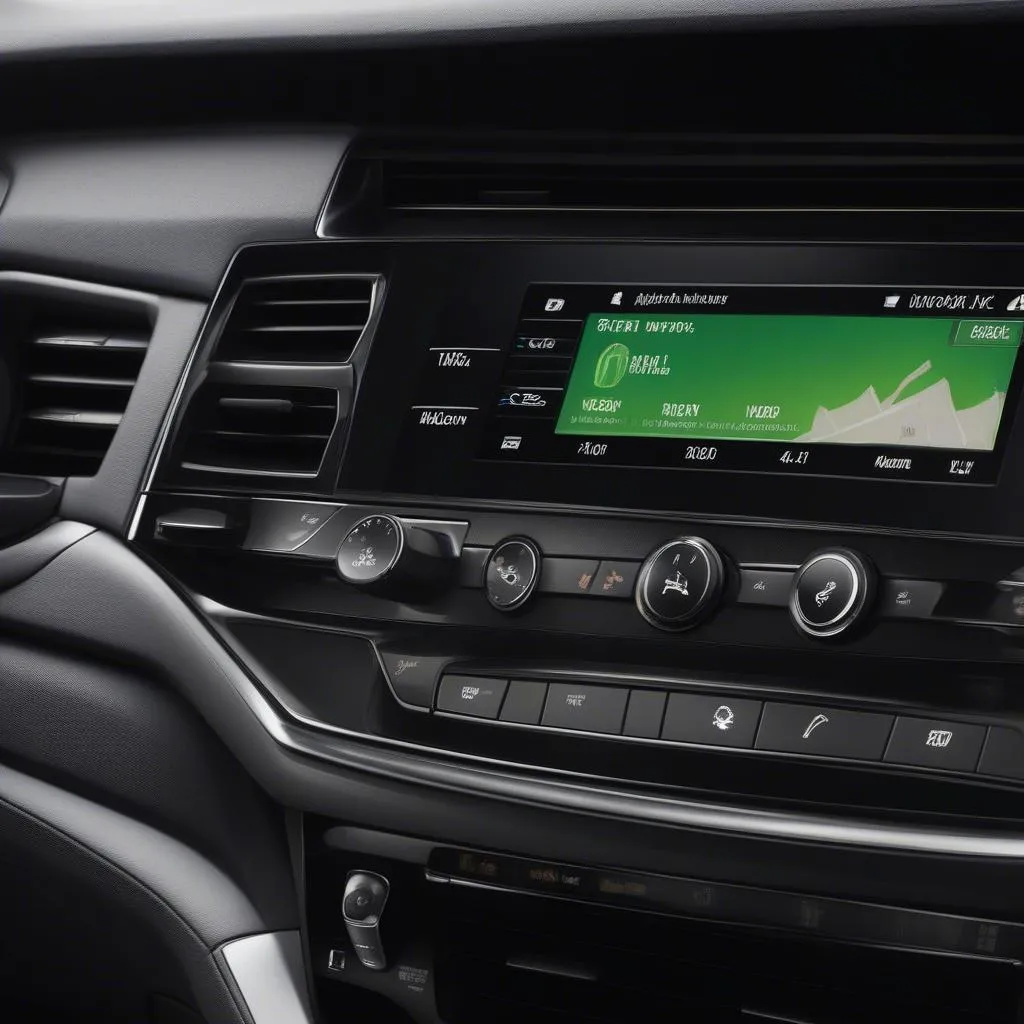The dreaded mazda brake warning screen. It can be a jarring experience, seeing that warning light illuminate your dashboard. This article will delve into the common causes behind the Mazda brake warning screen, offer troubleshooting tips, and discuss potential solutions, including remote diagnostic and software solutions.
Seeing the brake warning light appear on your Mazda’s dashboard can be concerning. Is it a simple fix or a sign of a more serious problem? Let’s explore the possibilities and how you can address them. This article offers valuable insights into diagnosing and fixing brake issues, potentially saving you time and money. We will cover everything from basic checks to more advanced diagnostic techniques.
Decoding the Mazda Brake Warning Screen
The Mazda brake warning screen isn’t just one light; it can manifest in a few different ways. A simple illuminated brake warning light could indicate low brake fluid. A more insistent flashing light, often accompanied by a chime, could signal a more serious issue like a malfunctioning ABS system or worn brake pads. Understanding these variations is the first step in effectively troubleshooting the problem. You can sometimes diagnose brake issues with remote diagnostics, similar to how some software updates can be done remotely. Read more about this for specific Mazda year models, such as the mazda 2019 brake warning screen.
Common Causes of the Mazda Brake Warning Screen
Several factors can trigger the Mazda brake warning screen. Low brake fluid is a frequent culprit. Leaks in the brake lines, worn brake pads, or a faulty brake master cylinder can all contribute to low fluid levels. A malfunctioning ABS sensor can also trigger the warning. Other potential causes include a faulty parking brake switch or issues with the electronic brake control module.
 Mazda Brake Warning Light – Low Brake Fluid
Mazda Brake Warning Light – Low Brake Fluid
Troubleshooting Your Mazda Brake Warning Light
The first step in troubleshooting your Mazda brake warning screen is to check your brake fluid level. Locate the brake fluid reservoir under the hood, usually near the firewall. If the fluid is low, top it off with the correct brake fluid type specified in your owner’s manual. If you recently had your brake pads replaced and are experiencing a warning light, this could point to improper installation.
Advanced Diagnostics and Solutions
If topping off the brake fluid doesn’t resolve the issue, it’s time for more advanced diagnostics. This often involves using a diagnostic scanner to read the error codes stored in the vehicle’s computer. These codes pinpoint the specific system or component causing the problem. Remember, even seemingly minor brake issues can affect your MOT. Check out our article on brake pad warning light mot 2019 for more information.
Remote Diagnostic and Programming Options
In some cases, remote diagnostics and software updates can address certain brake system issues. This involves connecting your vehicle to a specialized diagnostic tool that communicates with a remote server. A qualified technician can then analyze the data and, in some instances, upload new software to your vehicle’s control modules to fix the problem.
“Remote diagnostics are proving to be increasingly valuable in identifying and resolving brake system issues quickly and efficiently,” says automotive diagnostic specialist, Dr. Emily Carter. “In many situations, this technology can eliminate the need for a physical visit to a repair shop, saving time and money for car owners.”
Brake System Repairs
If the issue isn’t software-related, physical repairs might be necessary. This could involve replacing worn brake pads, repairing or replacing brake lines, or addressing issues with the ABS system or brake master cylinder. It’s crucial to have a qualified technician diagnose and repair any brake system problems.
Conclusion
Addressing the mazda brake warning screen promptly is crucial for your safety. By understanding the various causes, employing troubleshooting techniques, and seeking professional assistance when necessary, you can keep your Mazda’s braking system in optimal condition. From simple fluid checks to advanced diagnostics, taking proactive steps can prevent more serious and costly repairs down the road. If you’re dealing with warning lights on other vehicle makes, resources are available. For instance, you can find information on resetting the audi brake pads warning light reset.
“Regular brake system maintenance is key to preventing unexpected issues,” advises Dr. Carter. “By adhering to your vehicle’s recommended maintenance schedule, you can minimize the risk of encountering the dreaded brake warning screen and ensure your safety on the road.”
FAQ
-
What does the Mazda brake warning light mean?
It usually indicates low brake fluid, worn brake pads, or a fault in the braking system. -
Can I drive with the Mazda brake warning light on?
It’s not recommended. Have the issue diagnosed and repaired promptly. -
How do I check my Mazda’s brake fluid level?
Locate the brake fluid reservoir under the hood and check the fluid level against the minimum and maximum markings. -
What is remote diagnostics for brakes?
It’s a method where a technician remotely accesses your car’s computer to diagnose brake system problems. -
How often should I have my Mazda’s brakes checked?
Consult your owner’s manual for recommended brake inspection intervals. -
Can worn brake pads trigger the Mazda brake warning screen?
Yes, worn brake pads can cause the warning light to illuminate. -
What if the brake warning light stays on after adding brake fluid?
Further diagnostics by a qualified technician are necessary.


